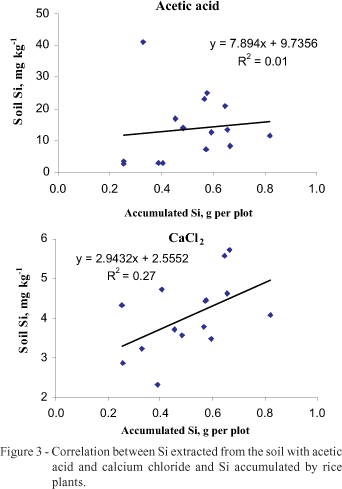Although silicon is not an essential nutrient, its application is beneficial for plant growth and development. To evaluate silicon sources in relation to agronomic efficiency and economic viability in rice crops (Oryza sativa L.), a greenhouse experiment was conducted, Quartzipsamment soil, in a completely randomized experimental design (n = 4). Treatments were 12 silicon sources and a control. Silicon was applied at the rate of 125 kg Si ha-1. Data were compared to a standard response curve for Si using the standard source Wollastonite at rates of 0, 125, 250, 375, and 500 kg Si ha-1. All treatments received CaCO3 and MgCO3 to balance pH, Ca and Mg. One hundred and fifty days after sowing, evaluations on dry matter yield in the above-ground part of plants, grain yield, and Si contents in the soil and plant tissues were performed. Wollastonite had linear response, increasing silicon in the soil and plants with increasing application rates. Differences between silicon sources in relation to Si uptake were observed. Phosphate slag provided the highest Si uptake, followed by Wollastonite and electric furnace silicates which however, did not show differed among themselves. The highest Si accumulation in grain was observed for stainless steel, which significantly differed from the control, silicate clay, Wollastonite, and AF2 (blast furnace of the company 2) slag. Silicate clay showed the lowest Si accumulation in grain and did not differ from the control, AF2 slag, AF1 slag, schist ash, schist, and LD4 (furnace steel type LD of the company 4) slag.
slag; metallurgical aggregate; silicate; oryza










